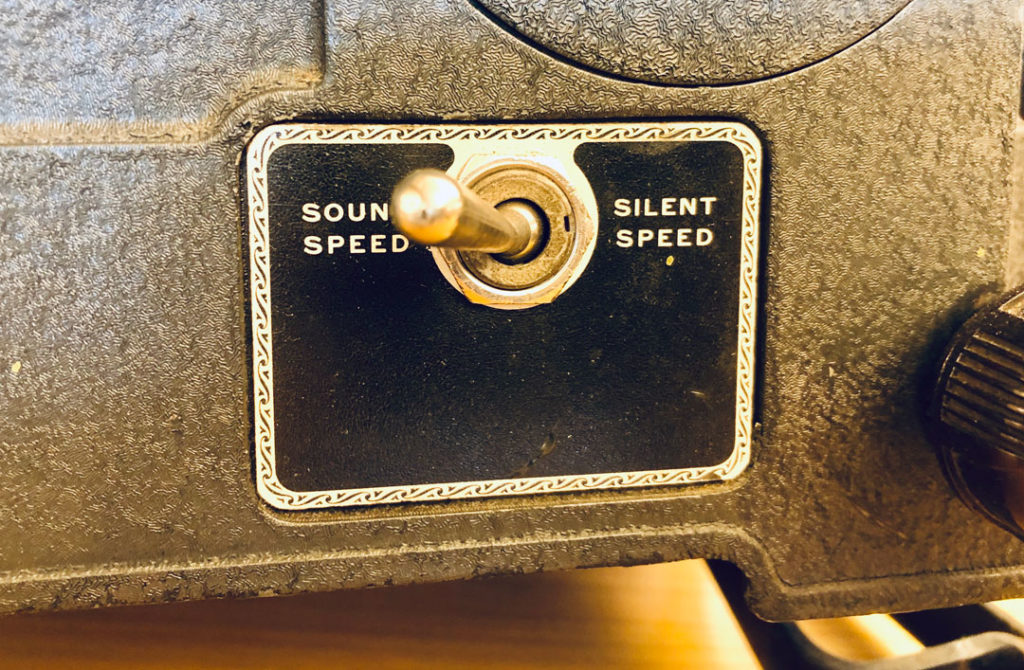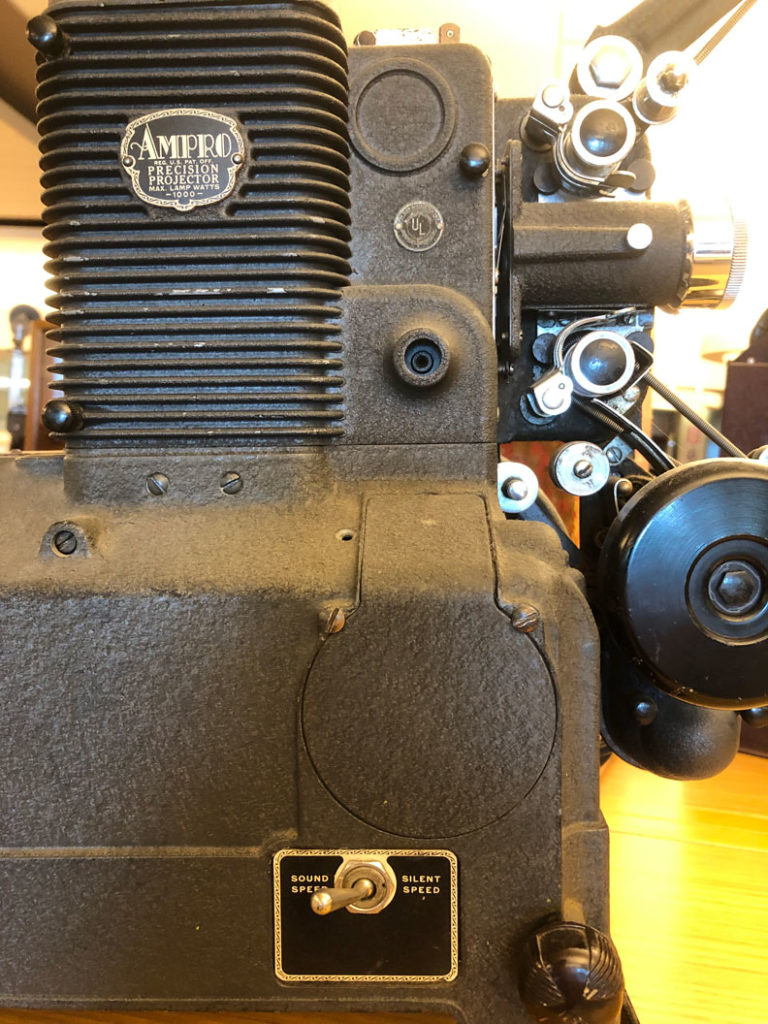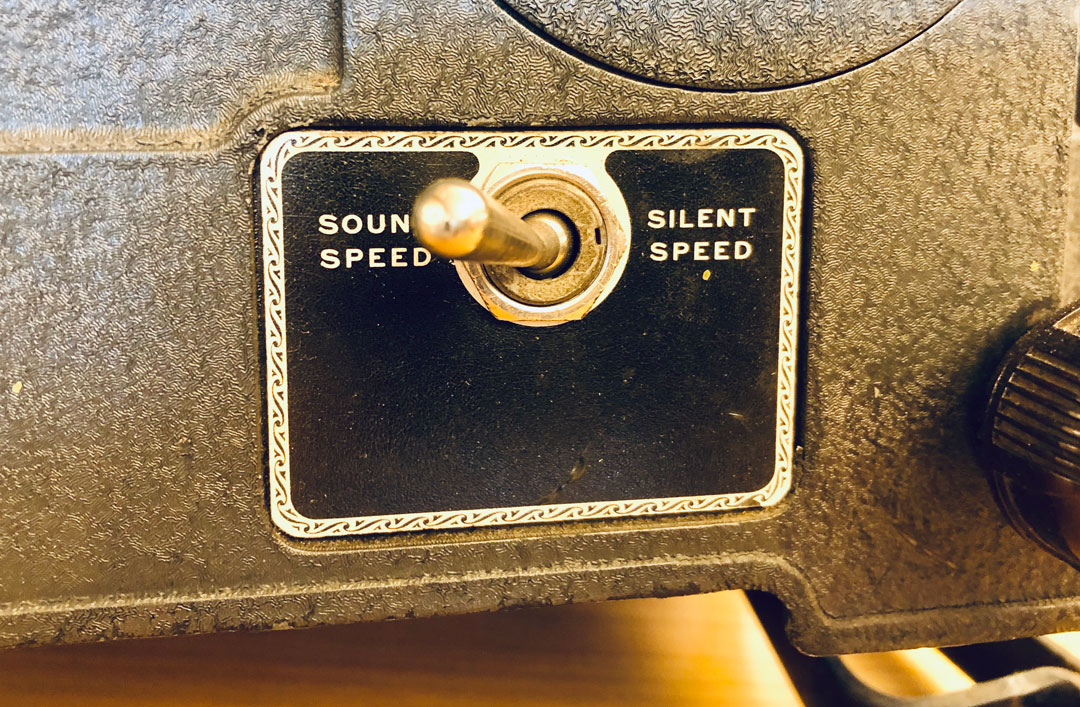There is a notion that silent films should be shown at what is often referred to as “silent speed”, or 18 frames per second. In the silent era, motion picture projectors were hand-cranked and, later, motorized but with rheostats. A question I’ve pondered for some time is: where does the term “silent speed” come from, and why is it associated with this frame rate and “natural motion”?
I have a theory that I’m still working on proving. It’s more about the term “silent speed” than it is the history of running speeds on theaters, as much as the latter is a big factor. My hunch is that this all has to do with home movies.
16mm film was introduced to the consumer market as a home movie format in 1923 in the USA. The Kodascope Library opened its Netflix-DVD-type service two years later, and a few other libraries quickly followed suit. If you figure the time it must have taken to get studio permission, get 35mm prints to reduce to 16mm, and to design and build equipment to make these rental prints, experiment with and test the camphor treatments, build the libraries and delivery system and create the catalogs, etc etc etc., the idea of showing movies shown in cinemas in your own home must have been part of the plan all along.
Another clue for me is the projectors made and sold to the 16mm home movie enthusiast.
16mm home movie cameras ran at 16 fps. Feel free to correct me if I’m wrong (politely, and ideally with a reference), but I believe this speed was chosen because it would give the home movie maker the maximum running time on a 100’ roll of 16mm without having a bad flicker when projected. Perhaps some cameras ran at 18 fps.
16mm home movie projectors sold in the 1920s either ran at 16 fps or, more commonly, had a rheostat that would start at 16 fps and go up from there. Why? My guess is not that the intention was to give home movie makers the opportunity to make their home movies look silly, but rather that they would be able to run rented 16mm’s of studio product at a speed akin to how they were run in theaters. There was no set or locked speed for studio product until sound comes into the picture in 1929.
This is where my theory about “silent speed” picks up. I haven’t done enough research on the history of 16mm movie projectors to give you a date when sound projectors hit the market. But I can tell you I have 16mm sound prints of a few cartoons from 1930 and a very nice print of Robert Benchley’s Treasurer’s Report (1929) that were printed in 1930-1931. So I am assuming 16mm optical sound projectors were on the market that early as well.
Here’s where it gets interesting, for me anyway.
16mm projectors I have seen from the 1940s and onward have a speed switch on them. The projectors needed to run at 24 fps to show the 16mm optical sound prints that were available from camera shops and rental libraries. If you were also a home movie maker, you needed to be able to show your home movies, which run at 16 fps.

These projectors have switches labeled “SILENT” for 16 fps and “SOUND” for 24 fps. The “silent” option was intended for your home movies, which were double-perf 16mm and were mute, and the “sound” option was for library loaned/rented prints which had optical sound tracks. These projectors did not have rheostats. Silent films were still being rented, but the medium was relegated to antique status in the industry and popular culture. If you were showing movies to people in 16mm, you’d certainly be aiming to present sound films.
Conflation has plagued a good deal of the assumptions about silent film. Two core examples for me are pie fights (there are two actual pie fights I know of in all silent comedy), and women tied to train tracks (actually a staple of stage melodrama, spoofed in silents). Historically, yes…motion pictures from the ‘aughts and through the early or mid-‘teens are best viewed at 16-18 fps.
However, I am wondering now if several decades of use of 16mm projectors with SILENT/SOUND switches on them — intended for home movies vs. studio or educational films — may be the origin of the term “silent speed” as well as the notion that all silent movies should be shown at a frame rate allowing you to show your home movies with “natural movement”. Wondering. Not stating…just wondering.


Chris Jacobs used to have a rule that silent films, starting about 1915, should be shown at a frame rate corresponding to the last two digits of the year. It’s true that some late silents actually feel a little SLOW at 24fps. Kevin Brownlow likes to run The General at 25.
Home movie cameras through the mid 1940s were shot at about 16fps. I once transferred some home movies of a guy’s wedding from 1941 on Kodachrome and they looked ridiculous at 24fps. He wanted me to do them again (this was several years ago, and he’s long gone now), but I couldn’t, because transfer technology insists on 24fps.
8mm stuff consistently was at a slower frame rate even through the 1960s. This stopped being the case as Castle introduced stuff that must have played pokey slow on a 16fps projector, so most Super 8 is at 24fps.
This analysis seems spot-on to me.
Thanks, Eric. I’m really interested in finding out about 16mm sound projectors in the 1930s, and hope I turn up some dirt on them.
Yeah, I’ve often used that rule as well, though for Cinecon, I’ve settled on 20 fps for most films from the teens, as 16-18 often still seems way too slow.